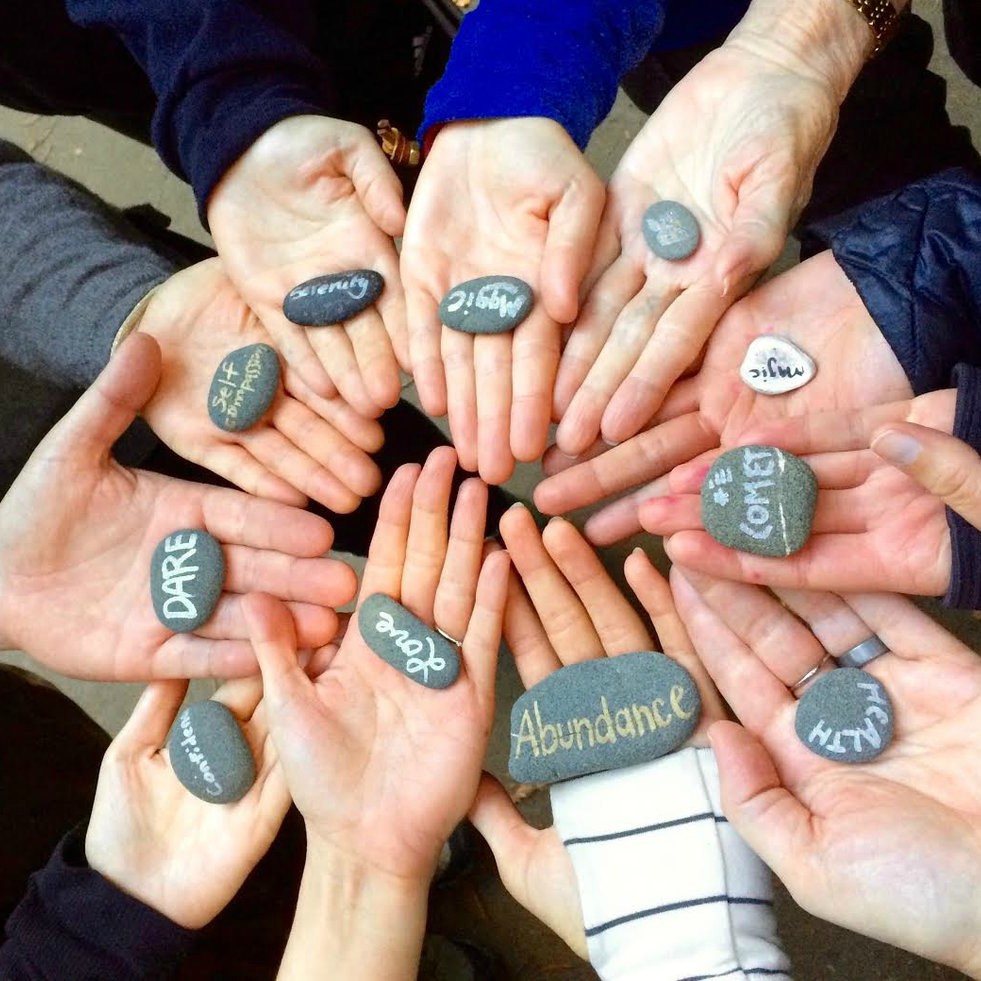
NAMACB Exam Preparation
Have you been hearing about the NAMA board exam and do your nerves immediately set in? This article will help to sooth those nerves and provide you with helpful information on how to prepare should you decide to take the exam.
Remember that Ayurveda is still a legal, unlicensed practice in the United States and the NAMACB exam is NOT a requirement to practice Ayurveda in the United States and students are NOT required to sit for the exam upon graduation. This an optional component to completion but is not a requirement for anyone in the United States at this time. Click here for more information.
Ask any student of Western Medicine if they were 100% ready for their exams when medical school was over, any Law student if they were 100% ready to sit the BAR, or any student of Traditional Chinese Medicine if they were ready to sit their certification board exam mid-way through their education, or even after graduation.
On the contrary, graduates of licensed professions that require board certification, spend weeks on end, or even months reviewing and preparing for the certification exams. As a student of the Science of Ayurvedic Medicine you should expect no less of your own board exams. In fact, most of these professions have separate schools that are set up just to help graduates prepare for the exams. SAT prep schools, BAR exam prep schools, and the list goes on. Unfortunately, because the NAMACB exam is so new, in fact only a handful of graduates have actually sat for the exam, no such prep course exists.
The truth is, while schools do the best job we can to help you prepare for these exams, most of the heavy lifting is up to you. We work directly with and alongside the National Ayurvedic Medical Association to help them design their exam, members of our teaching team sit for the exam to be sure we are preparing you properly, members of our staff sit on NAMA committees, and we build our curriculum directly advised by the NAMACB exam guidelines. Nonetheless, the work that goes into passing the NAMACB exam is yours, and yours alone.
Studying Ayurveda teaches you to “think like an Ayurvedic Practitioner” — to understand the jargon, to know where to find therapy recommendations, guidelines, principles, ethical obligations, and when to recognize you’re over your head and refer out to a more appropriate professional. Your teachers show you how to break case studies down and to understand and anticipate outcomes. These are the fundamental building blocks of becoming an “ayurvedic professional”.
Ayurvedic schools teach you how to decompose a set of facts, understand what rules to apply, and to begin to tap into your innate wisdom and insights to make the best possible therapy plan for your clients. The NAMACB exam tests whether or not you know enough of the substantive rules of the science of Ayurveda to work in the professional capacity as an Ayurvedic Practitioner.
Schools don’t necessarily know what state or country you’re going to be practicing in. Not to mention that requiring students to take classes in every possible subject for every possible exam would make school an 8-10 year program.
I say this as a reminder to our current internship class as well. I know you don’t always feel like you know “enough.” But your clients are getting better. That isn’t luck, that’s YOU and your ability. Remember that your clients are your guides, and working with them in the clinicals is real knowledge. They are helping to prepare you for your exams, and for your practice after graduation. Remember the community that you are a part of. Remember that we are here for you when you need us.
Many of you working through the internship have completely relaxed into the flow of the clinical assessment classes. But on the academic side, you’re starting to get peppered with questions about when you can take exams, how you should study, and how other classes have fared. You’re already looking ahead to the next hurdle, sometimes forgetting that to be in the present moment is the best preparation for those exams. The more you can learn from your clients and your teachers now, the better you’ll do.
The less time you spend marinating thoughts of how ill prepared you are and the more time you spend focused on your current classes, your coursework, and your clients, the better prepared you’ll be.
Staying in the present moment is, of course, easier said than done.
Now, let’s shine some light on the NAMACB exams, and also the aura of fear that usually surrounds it.
The fear and concern over passing the exam is understandable, because passing is ultimately the last hurdle on the path of being an Ayurvedic Practitioner.
But I would like to help dispel that fear, for past, present, and future students alike.
Standardized tests exist for many licensed professions. Doctors, nurses, and lawyers all have to take exams to prove their readiness. Remember the SATs and how much fear surrounded those scores? Somehow, these tests reduce our futures to mere numbers that are supposed to speak for us. It’s no wonder then that passing can take on an “all or nothing” quality. In reality, though, the tests are simply part of the regulation process (a rite of passage, so to speak).
There is no medical profession that is exempt from the certification exam process. There is also no student of medicine, law, or countless other professions that graduates and is exempt from preparing and studying for their own certification board exam.
To keep from letting the “threat” of the exam grow too big, it’s important to keep in mind what the exams are actually testing: how academically prepared you are and how psychologically ready you are.
Passing the NAMACB exams requires having both the necessary knowledge and having effectively studied. Prospective students always want to make sure that our curriculum provides the knowledge needed to pass the NAMACB exam. While taking any program in Ayurvedic Medicine helps with this, our Ayurvedic Practitioner curriculum is also continually being refined and updated so that the course prepares students to understand the material.
But testing isn’t just about knowing the material: it’s also about being able to apply it under pressure. Think about the phrase, “grace under pressure.” How many mistakes have you made in the past because you didn’t know the answer, and how many were simple mistakes? Can you stay calm enough so that fear doesn’t block access to all of the information you DO actually possess? When preparing for this sort of exam, figuring out how to deal with the anxiety of the moment should not be an overlooked aspect of preparation.
There’s a certain amount of self-confidence and faith involved in this process. One additional aspect of our curriculum that helps prepare students is the focus on the inner development of the practitioner. The idea behind this is that an effective healer must be healthy in their own body, mind, and spirit before helping others. Having faith in one’s own abilities is a huge component of being a successful student and a successful practitioner. Our students are allowed the time to focus on themselves and be the healthiest they can be when they step into the treatment room.
In turn, they should also believe in their knowledge base and that they have the ability to pass their exams. This is very easy to forget in the midst of the worry.
There are very simple things you can do to stay calm and focused so that the test doesn’t overwhelm you before it’s even a reality. Be practical in your preparation and remember to nourish yourself in the process.
I’m not saying that these exams are easy, or that everyone will breeze through them. You’re not supposed to. My point is that they’re not the insurmountable obstacle that they sometimes appear to be. So take your time, focus on what’s in front of you.
Also take some solace in the fact that you’re not alone in how you’re feeling. Do your homework, show up for class, throw yourself passionately into your clinicals and follow these steps below to be sure you’re prepared for the exams when/if that time comes.
Passing Your NAMACB Board Exam
Here are Yoga Veda Institute’s four KEYS to success in passing the boards the FIRST time.
There are four steps to passing your boards.
The four steps are:
- Develop Your Study Plan
- Identify Your Weak Areas
- Use Significant Repetition
- Use Our Advice & Resources
STEP ONE
Develop Your Study Plan
We recommend starting your studies at least 3 months prior to the exam. Do not wait. Spend 3+ hours per day six days per week. The last six weeks before the exam, is the most intense time for learning. Use this time to review/refresh your knowledge while developing self confidence in all the test items you know.
Focus only on pure review the last 2 days before the exam. On the two days prior to the exam simply review material that has already been learned, rather than trying to remember new facts.
Develop a study schedule and stick to it. The better prepared you are, the easier it will be to remain confident.
Things you should think about:
- Study at the same time each day if possible. If you’re a morning person, study in the morning, afternoon study in the afternoon, etc. But everyone should review once before you go to bed (so your brain has time to think about it until you sleep).
- Set checkpoints/short-term goals for yourself (e.g., I will have reviewed/taken at 80% level half of the Ayurveda Foundations Competencies by the end of week one).
- Don’t devalue your abilities. Believe in yourself. You got this!
STEP TWO
Identify Your Weak Areas
If you have not already done so, download the NAMACB test content outlines.
Also, do not assume that you know a particular area so well that you don’t spend any time on it. You must know all the content areas of the exam. We recommend spending 60% of your study time on weak areas, 20% on average areas, and 20% on strong areas. Make up your own tests and review only what you need!
STEP THREE
Use Significant Repetition
While repetition is important, we strongly recommend the use of the NAMA Study Guides to deepen your understanding of Ayurvedic Medicine. In other words, don’t use the study guides just for the sake of taking and passing the exam. Instead, make it your goal to expand your knowledge base by looking up the source book when you get a question wrong. Try to understand the reason why you got it wrong. Don’t just repeat the test to memorize the right answer, so that the next time you take the test you get that question right. Look up the reference to learn why you got the answer wrong.
You need to answer a lot of questions not only to learn the material but also to improve your test taking skill. That is, you need to practice and develop your inductive and deductive reasoning mind by carefully reading and answering many questions. Test taking skills require reading and re-reading the question until you completely understand what it is asking. It is like building your test muscle by repetition.
STEP FOUR
Take advantage of all the resources available to you as YVI Students.
Join the Clinical Internship Class offered by Yoga Veda Institute
Join the Clinical Mentorship Class offered by Yoga Veda Institute
Download and Reference the NAMACB Exam Reference Books
Take advantage of the of the NAMACB Exam Study Guides
Check and Review the NAMACB Competency Guidelines
Review these Helpful Tips for Exam Preparation
We wish you much luck and success for this exam, as well as the others you will be taking in the near future!
**As all states and countries have different laws and rules regarding Ayurveda licensing, please review the laws for your state for the most accurate and up-to-date information. The NAMACB exam is NOT a requirement to practice Ayurveda in the United States and students are NOT required to sit this exam upon graduation. Click here for more information.
As always, contact your enrollment advisor with any specific questions surrounding your very personal Ayurvedic journey.

Journey into Ayurvedic Wisdom: Unveiling the Bṛhat Trayī
At the core of Ayurvedic knowledge lies the Bṛhat Trayī – the three primary texts that weave together the intricate tapestry of this time-honored tradition. In this blog post, we embark on an exploration of the Caraka Saṃhitā, Suśruta Saṃhitā, and Aṣṭāṅga Hṛdaya,...

Journey into Ayurvedic Wisdom: Unveiling the Bṛhat Trayī
At the core of Ayurvedic knowledge lies the Bṛhat Trayī – the three primary texts that weave together the intricate tapestry of this time-honored tradition. In this blog post, we embark on an exploration of the Caraka Saṃhitā, Suśruta Saṃhitā, and Aṣṭāṅga Hṛdaya,...



